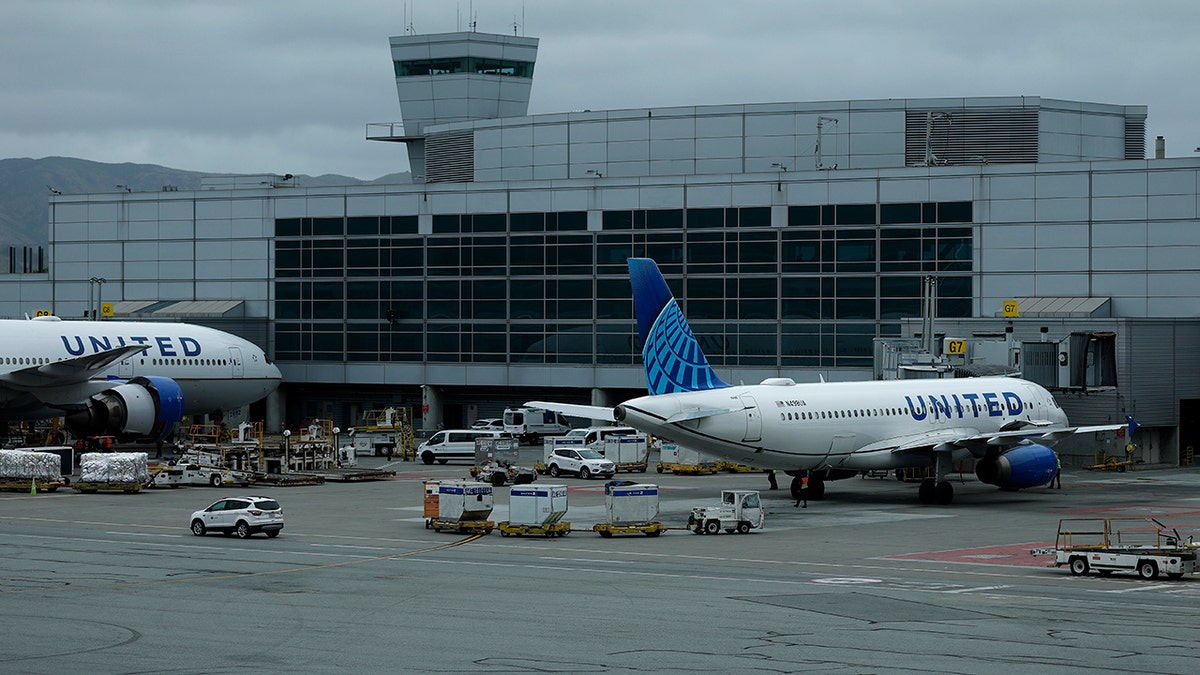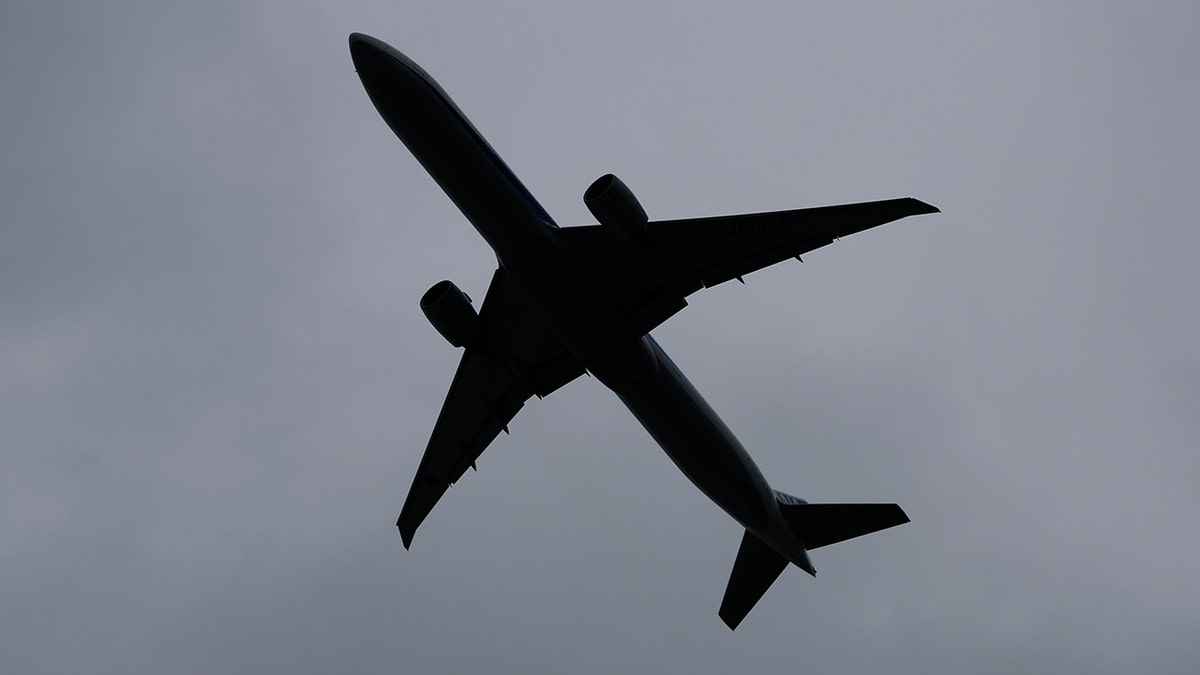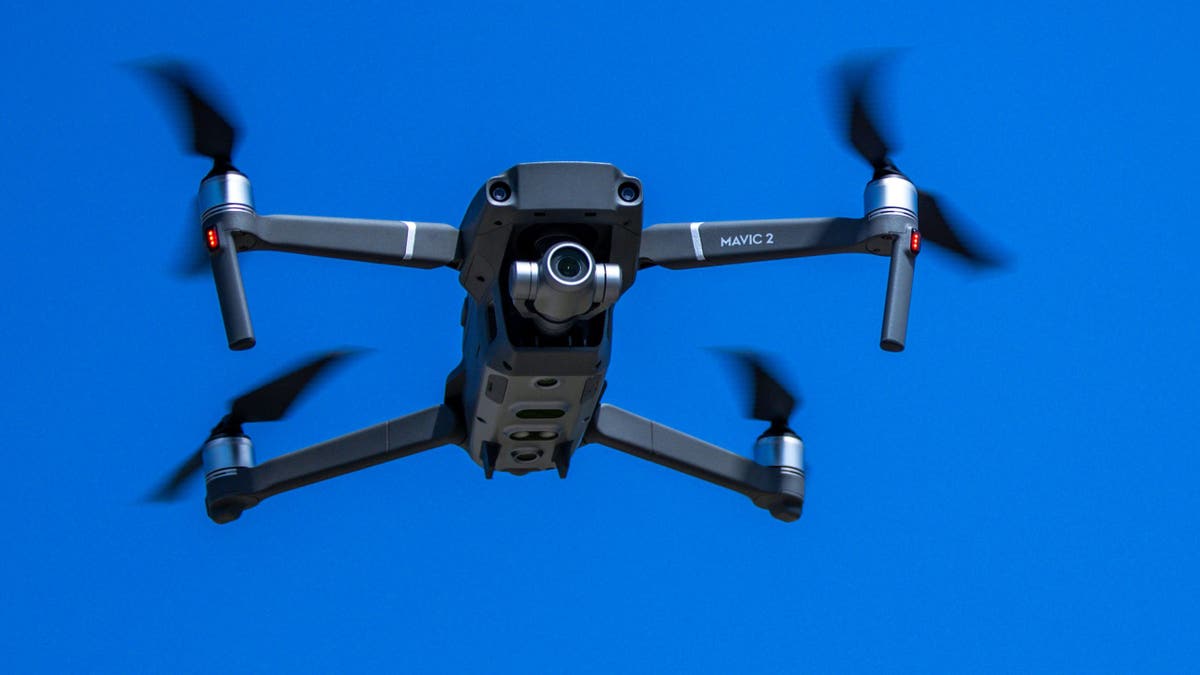Following several months of numerous high-profile aviation accidents, new data suggest pilots are facing a specific threat when it comes to keeping airline passengers safe in the skies.
Last year, drones accounted for approximately two-thirds of reported near-midair collisions with commercial aircraft taking off or landing within the country’s 30 busiest airports, according to the Associated Press. The findings come as aviation safety data indicate drones accounted for the highest number of near-misses since 2020, with the first reports dating back to 2014.
“The rise in recreational and commercial drone use has simply outpaced education and enforcement,” aviation attorney Jason Matzus told Fox News Digital. “More people are flying drones without fully understanding the rules or the risks.”
FLORIDA PROPERTY OWNERS PESTERED BY SPYING DRONES COULD SOON BE ALLOWED TO FIGHT BACK WITH ‘FORCE’

Drones account for two-thirds of near-midair collisions with commercial aircraft taking off or landing in 2024, according to AP. (iStock)
The data comes as reports involving drones infringing on airspace continue to pour in. In August, a drone nearly clipped the left wing of a passenger jet, coming within 50 feet of the aircraft as it took off from Newark International Airport.
Two months later, a jetliner flying at an altitude of 4,000 feet near Miami’s international airport reported a “close encounter” with a drone.
In November, a commercial aircraft’s crew spotted a drone outside the cockpit window as the plane was on final approach to San Francisco International Airport. The pilots were unable “to take evasive action,” forcing them to watch as the drone passed less than 300 feet away.
MYSTERY DRONES COULD BE IDENTIFIED FASTER USING NEW DETECTION TOOL, BUT FAA LACKS RESOURCES

United Airlines planes sit parked at the gate at San Francisco International Airport on April 24, 2025 in San Francisco, California. (Justin Sullivan/Getty Images)
“New drone pilots may not be aware of the regulations that restrict flying near airports, and some may not understand the dangers of altitude violations,” Matzus said.
Over the past decade, drones have been responsible for 51% of reported near-misses, with 122 of 240 incidents being attributed to unmanned aircraft systems (UAS).
Drone incursions are more likely at high-traffic airports with low-flying aircraft
While the data only factors in the country’s 30 most popular airports, experts suggest the reason for the increase in drone incursions in specific spaces could stem from the surrounding areas.
FOREIGN NATIONALS FLYING DRONES OVER US MILITARY SITES RAISES ‘ESPIONAGE’ CONCERN: EXPERT
“The issue is mostly related to the population,” James McDanolds, program chair of the School of Uncrewed Technology at Sonoran Desert Institute, told Fox News Digital. “Airports like Newark are surrounded by highly populated areas, including New York City across the Hudson. There are more people who purchase UAVs who are either interested in them as toys or something to experiment with who don’t know about airspace. “
Additionally, planes are more vulnerable to near-misses from drones when taking off and landing due to their low altitudes, with FAA regulations allowing drones to fly as high as 400 feet in unrestricted airspace.
“Manned aircraft have to be at a lower altitude as part of their landing pattern until they are further away from the airport,” McDanolds said. “As UAVs are allowed to fly up to 400 feet above ground level, most manned aircraft in the landing pattern are anywhere from 100 feet above ground level to zero feet above ground level during takeoff and landing. During the final approach, when a manned aircraft descends to the runway, it comes into the 400 feet to zero feet above ground level range, and that is where the near misses with UAVs in the airport airspace occur.”
US MILITARY TRAINS SERVICE MEMBERS TO COUNTER GROWING DRONE THREAT

Drone operators found to be conducting unsafe operations could face fines of up to $75,000, according to the FAA Reauthorization Act of 2024. (iStock)
Constantly changing technology forces airports to adapt
Most major airports exist in Class B airspace, which requires drone pilots to obtain approval from the FAA in order to fly. However, updated drone technology suggests pilots must operate on a type of honor-system, with previous “geofencing” systems that would typically block drones from entering restricted airspace no longer in place.
“Companies like DJI had geofencing tools in place, but as of January this year, there is no geofencing that completely prevents aircraft from entering or flying in the airspace,” McDanolds told Fox News Digital. “Pilots only receive a warning.”
The decision from DJI reportedly came as managing requests from authorized pilots to disable the geofencing temporarily became a burden on the company. With no government regulations requiring geofencing in place, DJI opted to end the feature.
CHINESE CITIZEN CHARGED WITH FLYING DRONE OVER KEY US MILITARY, NASA ROCKET LAUNCH BASE, TAKING PHOTOS

An All Nippon Airways plane takes off from San Francisco International Airport on April 24, 2025 in San Bruno, California. (Justin Sullivan/Getty Images)
“We had around-the-clock service, but the number of applications coming in were becoming really hard to handle,” Adam Welsh, head of global police at DJI, told AP. “They all had to be reviewed individually.”
Pilots will now receive a warning on their controller screens if their drone enters restricted airspace.
“DJI voluntarily implemented geofencing in 2013 when mass-produced small drones were a new entrant to the airspace, and regulators needed time to establish rules for their safe use,” the company said in a statement to Fox News Digital.
FBI LEADER SAYS IT’S ‘CONCERNING’ HOW LITTLE HIS AGENCY KNOWS ABOUT MYSTERIOUS DRONES SEEN OVER NEW JERSEY
The lack of geofencing means drones will no longer immediately land or fly back to the pilot upon entering restricted airspace, leaving it up to individual airports to identify and disable a UAV flying within the path of an aircraft.
“There are some experimental counter-UAS measures being tested at different airports, but currently there is not a one-size-fits-all or even one-size-fits-most countermeasure to prevent UAV incursions into airport airspace,” McDanolds said.
The FAA is looking into new technology that could act as a drone deterrent, with methods such as using radio signals to force them to land and using high-powered microwaves or laser beams to disable drones.
“The FAA has been testing drone detection and counter-drone technologies at airports over the last few years and is expanding testing to off-airport locations,” the agency said in a statement to Fox News Digital. “These tests determine the effectiveness of the technologies and whether they might interfere with FAA or aircraft navigation systems.”
The agency has also implemented a requirement for all drone pilots to equip their device with a radio transponder – called Remote ID – that broadcasts the drone’s location and owner information, in an attempt to avoid collisions and hold pilots accountable.
NO SIGNAL, NO PROBLEM: INTELLIGENCE FIRM DEBUTS DRONE TECH EQUIPPED TO BEAT GPS JAMMERS

Airports are currently looking into anti-drone technology to keep devices out of the paths of aircraft. (Jens Büttner/Picture Alliance via Getty Images)
Experts call on FAA for harsher penalties, updated technology
In light of the uptick in near collisions with aircraft, experts are calling for updated regulations and stiffer penalties for pilots who operate drones in restricted airspace, but acknowledge the need for the FAA and local law enforcement to work in unison.
“By both making examples of individuals and public announcements through cooperation with media outlets, social media, and more, to spread the information on flying around airports and the threat of repercussions if someone does fly within the airport airspace without permissions,” McDanolds told Fox News Digital. “Most of the UAVs sold in the U.S. are made externally to the U.S. which do not always have to cooperate with local businesses, local governments, or federal organizations of another country.
The calls for improved regulations come after several drone pilots have faced legal repercussions after flying their devices recklessly.
“The FAA receives more than 100 drone-sighting reports near airports each month, and we want to send a clear message that operating drones around airplanes, helicopters, and airports is dangerous and illegal,” the agency said in a statement to Fox News Digital. “Unauthorized operators are subject to stiff fines and criminal charges, including possible jail time.”
LOS ANGELES WILDFIRES: CALIFORNIA POLICE ARREST MULTIPLE DRONE PILOTS AS FIREFIGHTERS BATTLE INFERNOS
In December, Boston police used Remote ID technology to find and arrest two men who flew a drone near Logan International Airport.
Earlier this year, a “Super Scooper” plane fighting wildfires tearing through Southern California collided with a drone, forcing it to be removed from firefighting efforts for several days as the plane’s left wing was repaired. The 56-year-old pilot pleaded guilty to a federal charge of recklessly flying his aircraft and is awaiting sentencing.
CLICK HERE TO GET THE FOX NEWS APP
Drone operators found to be conducting unsafe operations could face fines of up to $75,000, according to the FAA Reauthorization Act of 2024.
“I believe commercial drone pilots and experienced hobbyists that want to keep the technology in good standing and a positive public perception keep their aircraft out of airport airspace,” McDanolds said. “There will always be individuals, even with enough media announcements, education and informing, who will choose to cause trouble.”
The Associated Press contributed to this report.










